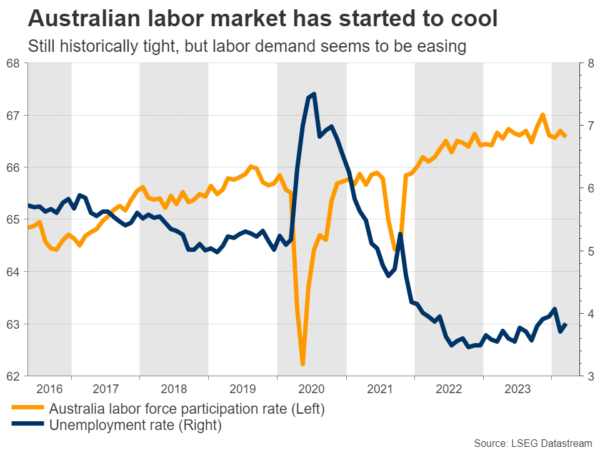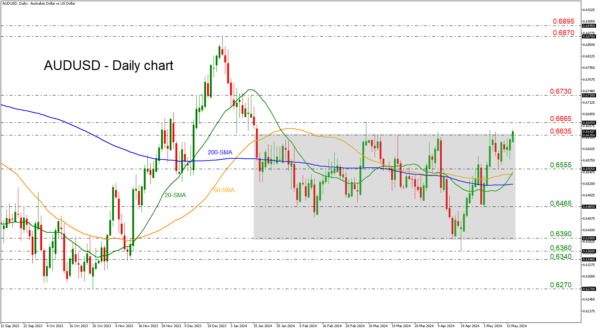- Forecasts suggest higher unemployment rate
- Employment change expected to tick higher
- Aussie holds within trading range, data due on Thursday at 01:30 GMT
Upon being dissatisfied with the RBA’s choice to adopt a neutral position, Australian dollar traders will now redirect their attention towards Thursday’s employment report.
While the Bank officials maintained their stance at their decision last week, further increases in wage growth, which has been ascending since the third quarter of 2020, and a robust employment recovery could significantly increase the likelihood of a rate hike in September. This comes at a time when other central banks are contemplating when to begin reducing interest rates. This could be helpful for the Australian dollar, which could also profit from a further improvement in risk appetite if investors are encouraged to increase their Fed rate cut wagers by the US inflation data.
RBA keeps rates unchanged; focus on employment report
Following its March meeting, the RBA Board maintained the cash rate goal at 4.35% while escalating the language about inflation concerns. Forward-looking press statements emphasize that the Board is not dictating future policies. Inflation is dropping, although at a slower rate than anticipated. While services inflation is progressively decreasing, the RBA now predicts a tighter labour market than originally expected. Leading measures of labour demand have altered more than lagging indicators like unemployment, indicating an expected relaxation in the employment picture.
To understand recent inflation and labour market surprises, it is crucial to consider weak domestic demand and falling inflation. The RBA Board should avoid overreacting to monthly or quarterly economic statistics due to its noise. Recall that inflation unexpectedly rose in September, leading to a rate hike in November. However, the December quarter data was disappointing, and projected upgrades were reversed for February 2024. In May, the Board did not need to purchase additional insurance against inflation surprises, as it had previously done so. The Governor stated in a media conference that they wish to avoid raising rates but will act if necessary.
March’s labor force participation rate dropped from 66.7% to 66.6%. That meant a minor increase in the labor force, while a drop in employment raised the unemployment rate from 3.7% to 3.8%. After a year of cooling, labor demand still remains strong, as job growth was mildly positive in the first quarter. The RBA still considers the labor market “tighter than full employment and easing only gradually”. With participation flat at 66.6%, the unemployment rate could round up to 3.9% in April, after printing 3.8% March.

AUDUSD battles with upper boundary of the range
In the charts, AUDUSD has been developing within a consolidation area since January 16 with upper boundary the 0.6635 resistance and lower boundary the 0.6390 support. Currently, the market is flirting with the 0.6635 obstacle, a region that the market failed several times in the past two months to surpass. If the price successfully breaks this level, then it may challenge the 0.6635 barrier. Even higher, the 0.6730 mark may add some optimism for more increases.
On the other side, a disappointment in the employment data could open the way for a test of the 0.6555 support ahead of the bullish crossover within the 20- and the 50-day simple moving averages (SMAs) at 0.6540. Below that, the 200-day SMA at 0.6520 may act as a turning point for traders.










